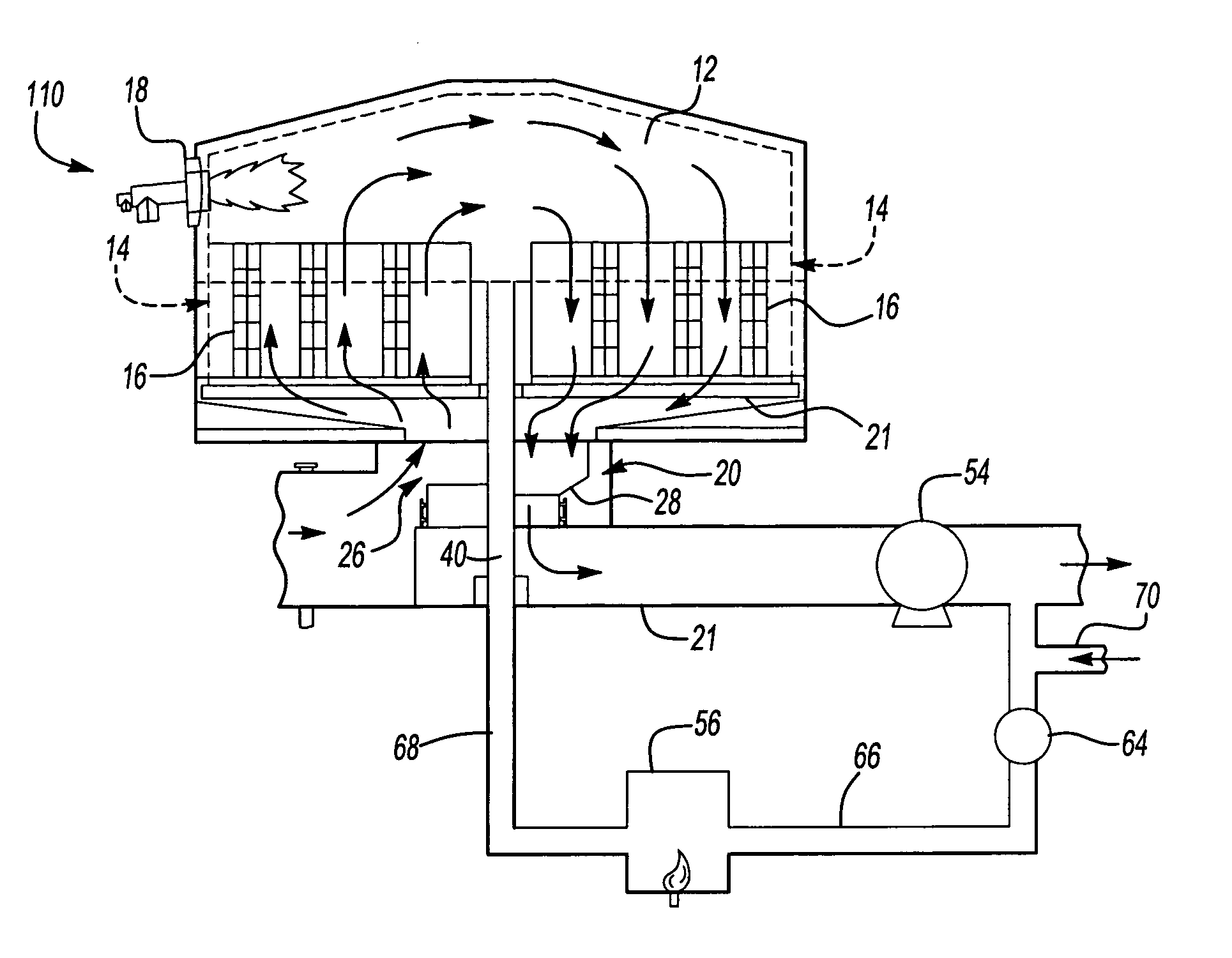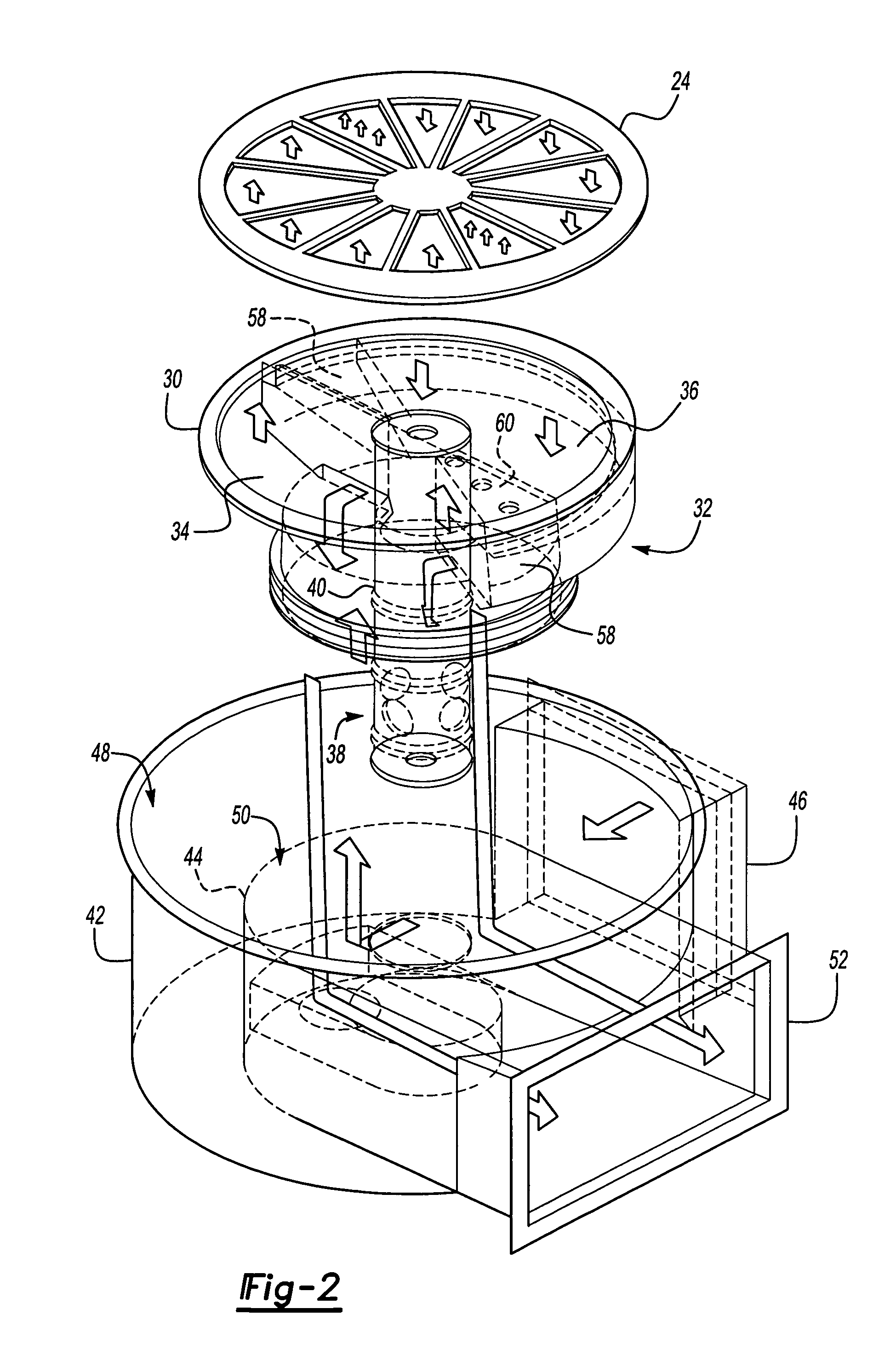Online bakeout of regenerative oxidizers
a technology of regenerative oxidizers and bakeouts, which is applied in the field of online bakeouts of regenerative oxidizers, can solve the problems of loss of regenerative oxidizer efficiency, or malfunction, loss of production time, and insufficient residence time of heated purge gas, etc., and achieves the effect of reducing the required bakeout time and reducing the bakeout tim
- Summary
- Abstract
- Description
- Claims
- Application Information
AI Technical Summary
Benefits of technology
Problems solved by technology
Method used
Image
Examples
Embodiment Construction
[0027]The rotary regenerative oxidizer 10 illustrated in FIG. 1 is generally conventional for illustrative purposes only and thus does not limit the method of cleaning the heat sink media of this invention, except as set forth in the appended claims. The illustrated rotary regenerative oxidizer 10 includes a combustion chamber 12, pie-shaped compartments or segments 14 each including heat sink media 16 therein as described above. A burner 18 heats the gas in the combustion chamber 12 to a temperature sufficient to oxidize the volatile organic compounds received therein, typically to a temperature generally about 600° F. The pie-shaped compartments or segments 14 are open at both ends to communicate with the combustion chamber 12 at one end and the rotary valve 20 at the other end, the components of which are shown in detail in FIG. 2. A stator 24 is located between the rotary valve 20 and the lower open ends of the pie-shaped compartments 14 shown in FIG. 2.
[0028]The waste gas strea...
PUM
 Login to View More
Login to View More Abstract
Description
Claims
Application Information
 Login to View More
Login to View More - R&D
- Intellectual Property
- Life Sciences
- Materials
- Tech Scout
- Unparalleled Data Quality
- Higher Quality Content
- 60% Fewer Hallucinations
Browse by: Latest US Patents, China's latest patents, Technical Efficacy Thesaurus, Application Domain, Technology Topic, Popular Technical Reports.
© 2025 PatSnap. All rights reserved.Legal|Privacy policy|Modern Slavery Act Transparency Statement|Sitemap|About US| Contact US: help@patsnap.com



